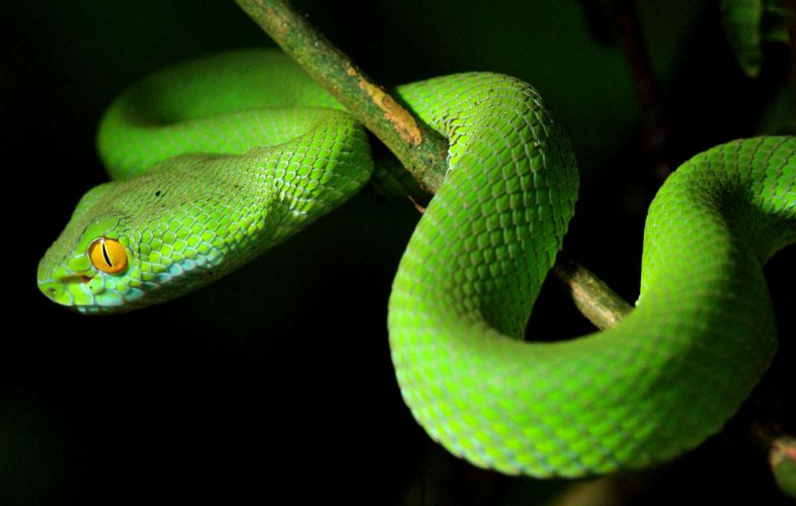The big-eyes are the equivalent of bats, night feeders that leave the cave each evening.
大眼鯛相當(dāng)于蝙蝠,它們每天晚上出洞覓食。
And like all cave commuters, they are most vulnerable at the scheduled time of departure.
和所有洞穴動物一樣,它們在出發(fā)階段最容易遭受攻擊。
A bottle-neck funnels these exiting bats into dense concentrations, attracting the attention of others.
當(dāng)大群蝙蝠密集地通過瓶頸出口時,很容易引起其它動物的注意。
The bats can detect the snakes using echolocation,
蝙蝠能利用回聲定位覺察到蛇
but the snakes are literally in the dark, they can see nothing.
而蛇則完全處于黑暗之中,它們看不見任何東西。

The strikes seem to be largely hit and miss.
這種攻擊更像是在碰運氣
But the snakes have a secret weapon.
不過蛇也有自己的秘密武器
They can actually sense each bat flying past.
它們實際上能感覺到每一只飛過的蝙蝠
Receptors in the snake's head pick up the heat given off by the flying bats, as this thermal image shows.
位于頭部的“熱眼”能覺察到飛行中的蝙蝠散發(fā)出的熱量,正如這幅熱影像所示。
To the snakes, the bats are apparently glowing and this gives them something to aim at.
每一只蝙蝠在蛇“眼”前都是活靈活現(xiàn),這也給了它們瞄準(zhǔn)目標(biāo)的機(jī)會。











